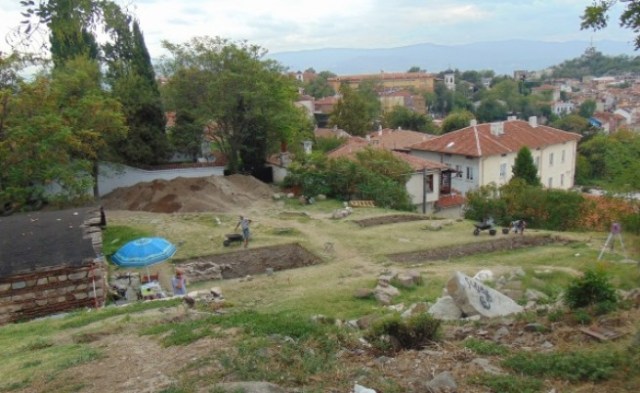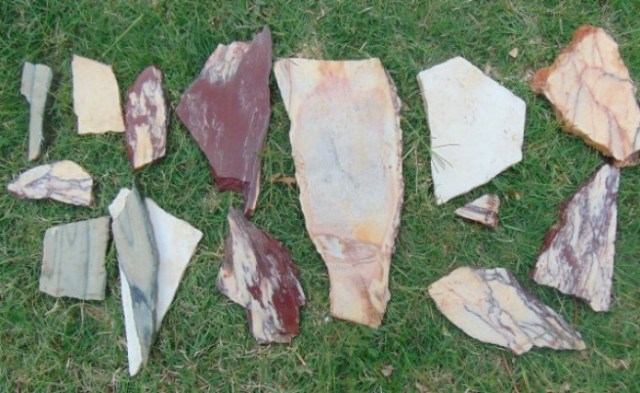
PHOTO: archaeologyinbulgaria.com
PLOVDIV, BULGARIA – Archaeologists working on the archaeological site of Nebet Tepe have unearthed a necropolis, a fortress tower, some marble fragments, and several other artifacts that tell a surprising story about one of the world’s oldest cities.
Humans have been inhabiting Plovdiv for thousands of years. It all began with a settlement on one one of the seven hills Plovdiv sits on, called Nebet Tepe. The archaeological signs of human civilization on Nebet Tepe date back almost 8,000 years.
Eventually, the prehistoric settlement would be transformed into Eumolpia, and would be the seat of the extremely powerful Ancient Thracian tribe, Bessi. They were described by Strabo as the fiercest of the independent Thracian tribes, “addicted to plunder”.
The settlement eventually grew to encompass two of the neighboring hills. In 342 BC, King Philip of Macedon conquered the city and renamed it after himself, calling it “Philippopolis”. Under Macedonian rule, and later Alexandrian rule, the city would develop into a prominent urban center for Thrace.
The city weathered the collapse of Alexander the Great’s Empire and was left in relative peace and independence until the 1st century AD, when the Empire of Rome finally encompassed Ancient Thrace. Philippopolis was named the capital of the Ancient Roman province of Thrace. The city expanded even further, engulfing the plain around it, and would be called by the Romans, “Trimontium”, or “The Three Hills”.
The city would eventually grow to be a major Byzantine city in the AD 600s, and would be conquered for the First Bulgarian Empire by Khan Krum in 812 AD and was made a permanent fixture of Bulgaria a few years later under Khan Malamir.
The city has been through several different excavations since the 1920s, when the existence of the Ancient Thracian layers was first discovered. From the 1920s up to now, archaeologists have discovered finds dating back to the Bronze and Iron ages, and a clay altar close to the top of the Nebet Tepe Hill, suggesting it was also a major religious center at one point in the city’s history.
The area that the current excavations are focused on has been inhabited since prehistory. The work is being led by archaeologist Sofiya Hristova. So far, the digs have only gotten down into the Roman layers. They’re due to be complete in a week, and they’ve found some pretty intriguing stuff. Their finds tell a story of an affluent city – more affluent than anybody had previously thought.
The terrain at Plovdiv is extremely rocky, so archaeologists have been using probes to drill through the archaeological layers. The archaeologists set out this year to map a section of a wall of a fortress on Nebet Tepe, called the Nebet Fortress. They were also hoping to discover other structures from different time periods, basing their work on the archaeological probes conducted last year.
“We are researching a spot which has never been excavated before,” Sofiya Hristova said, “so this gives us an opportunity to refine [our knowledge of the] stratigraphy of the site.”
The first find was made next to an ancient cistern that has since been restored and reused as a water tank in modern times. They discovered a medieval necropolis, or cemetery, under the bottom of a lime pit nearby.
They’ve also discovered a new tower in the Nebet Fortress, as well as several new walls built inside the fortress, showing that the city went through several periods of intense construction.But, perhaps the most interesting find made at Nebet Tepe is not the necropolis or the construction projects, but the discovery of fragments of colored marble and several caches of coins.
These findings match the story that the city encompassing Nebet Tepe was, consistently throughout the ages, one of the most affluent cities in the area. The pieces of colored marble belong to larger blocks used for construction that would have been extremely expensive, including the coveted green marble. The archaeologists believe that the marble would have been used in the construction for a wealthy building, perhaps a ruler’s house or a governmental center.

PHOTO: archaeologyinbulgaria.com
The dig at Nebet Tepe will finish up in a week. The finds are being carefully preserved and cataloged. Hopefully, in a week’s time, the archaeologists under Sofiya Hristova will find more artifacts that can lend themselves to telling the story of one of Europe’s oldest cities.


![Human remains at Nebet Tepe [PHOTO: archaeologyinbulgaria,com]](https://historythings.com/wp-content/uploads/2016/09/Nebet-Tepe-2.jpg)